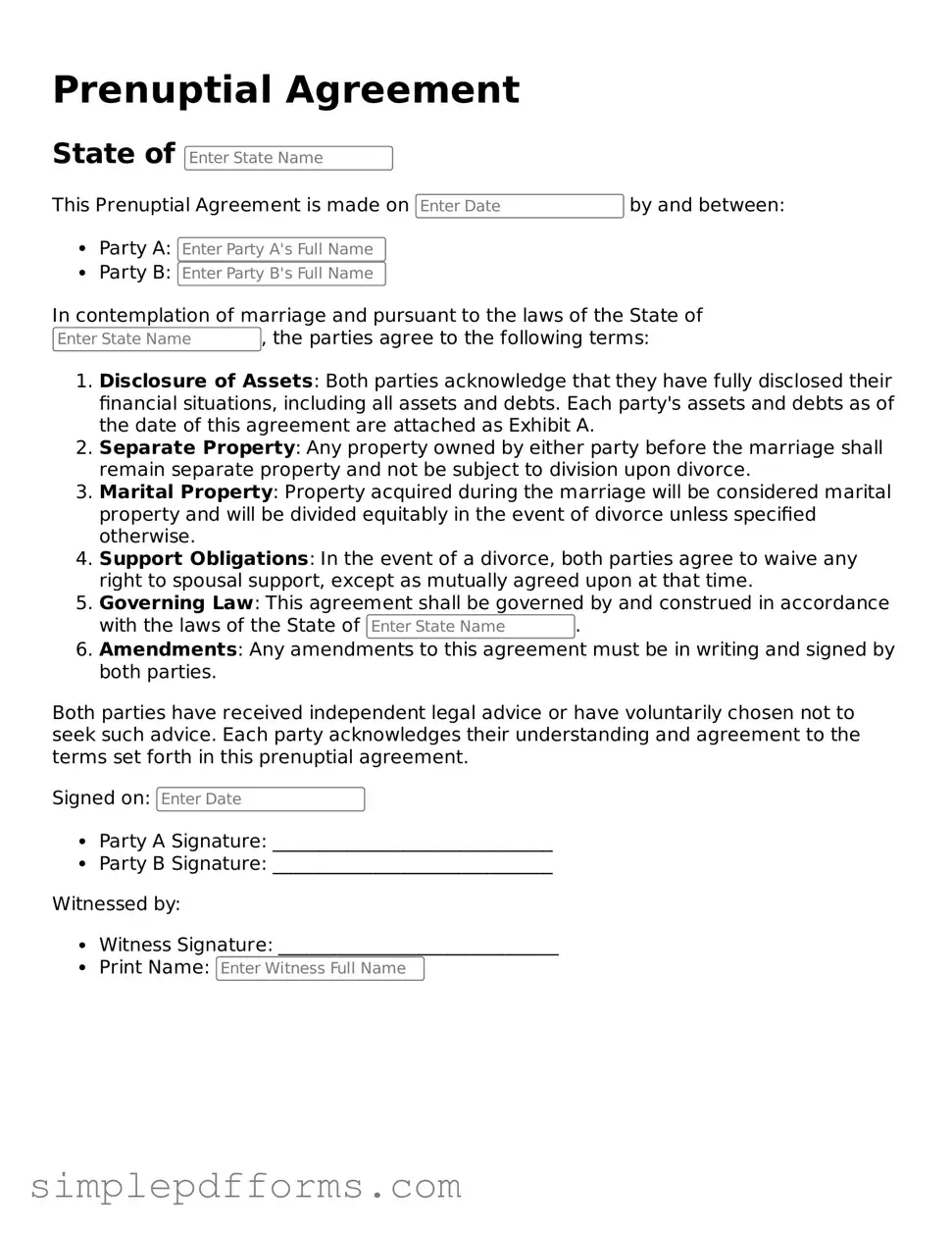Free Prenuptial Agreement Form
A prenuptial agreement, often referred to as a prenup, is a legal contract created by two individuals before they marry. This document outlines the division of assets and financial responsibilities in the event of a divorce or separation. By establishing clear terms, a prenup can help protect both parties and reduce potential conflicts in the future.
Open Prenuptial Agreement Editor Now
